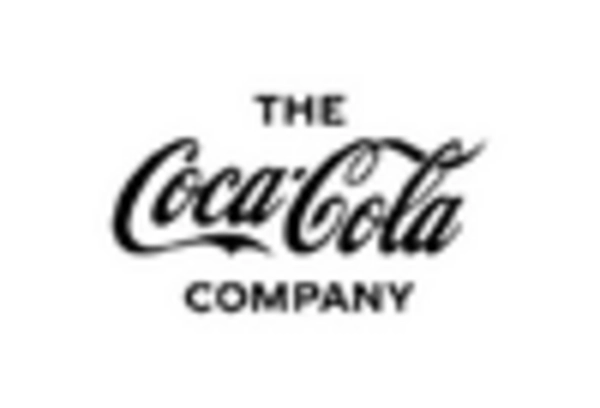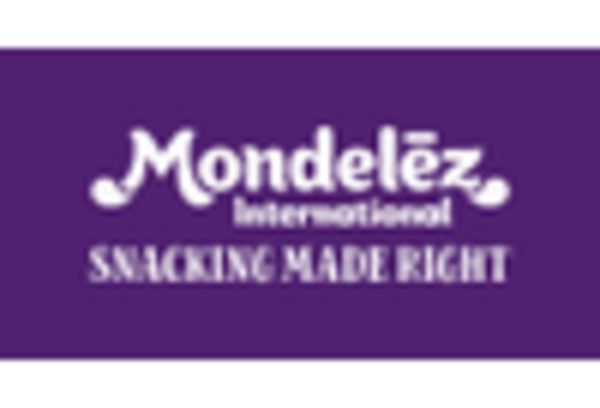Shift Towards Plant-Based Products
The consumer packaged-goods market in North America is witnessing a significant shift towards plant-based products. This trend is driven by increasing health consciousness and environmental concerns among consumers. Sales of plant-based food items have surged, with a reported growth of over 25% in the last year alone. As more individuals adopt vegetarian or vegan diets, companies are expanding their product lines to include plant-based alternatives. This driver indicates that brands must innovate and diversify their offerings to cater to this growing segment. The rise of plant-based products not only reflects changing dietary preferences but also highlights the potential for companies to tap into new markets and consumer bases.
Rising Consumer Demand for Convenience
The consumer packaged-goods market in North America is experiencing a notable shift towards convenience-oriented products. Busy lifestyles and the increasing number of dual-income households have led consumers to seek quick and easy meal solutions. This trend is reflected in the growth of ready-to-eat meals and snack options, which have seen a rise of approximately 15% in sales over the past year. As consumers prioritize time-saving products, companies in the consumer packaged-goods market are adapting their offerings to meet these demands. Innovations such as single-serve packaging and meal kits are becoming increasingly popular, indicating a significant transformation in consumer preferences. This driver suggests that brands must continuously evolve to provide convenient solutions that align with the fast-paced lifestyle of modern consumers.
Increased Focus on Product Transparency
In the consumer packaged-goods market in North America, there is a growing emphasis on product transparency. Consumers are increasingly concerned about the ingredients and sourcing of their food products, leading to a demand for clear labeling and ethical sourcing practices. Approximately 70% of consumers express a preference for brands that provide detailed information about their products. This trend is prompting companies to adopt more transparent practices, such as disclosing ingredient origins and production methods. As a result, brands that prioritize transparency are likely to build stronger consumer trust and loyalty. This driver suggests that the consumer packaged-goods market must adapt to these evolving expectations to remain competitive and relevant in the eyes of discerning consumers.
Growing Importance of Omnichannel Retailing
The consumer packaged-goods market in North America is increasingly influenced by the importance of omnichannel retailing. Consumers are now engaging with brands across multiple platforms, including physical stores, online marketplaces, and social media. This shift necessitates that companies develop cohesive strategies to provide a seamless shopping experience. Research indicates that brands utilizing omnichannel strategies can see a revenue increase of up to 30%. As consumers expect flexibility in how they shop, businesses must adapt to these preferences by integrating their online and offline channels. This driver suggests that the consumer packaged-goods market must embrace omnichannel approaches to enhance customer engagement and drive sales.
Technological Advancements in Supply Chain Management
Technological advancements are reshaping the consumer packaged-goods market in North America, particularly in supply chain management. The integration of artificial intelligence and data analytics is enhancing inventory management and demand forecasting. Companies are leveraging these technologies to optimize their operations, reduce costs, and improve product availability. For instance, the implementation of AI-driven analytics has been shown to increase efficiency by up to 20%, allowing brands to respond more swiftly to market changes. This driver indicates that firms that invest in technology will likely gain a competitive edge, as they can better meet consumer demands and streamline their supply chains. As the market continues to evolve, the role of technology in enhancing operational efficiency will remain crucial.


















Leave a Comment